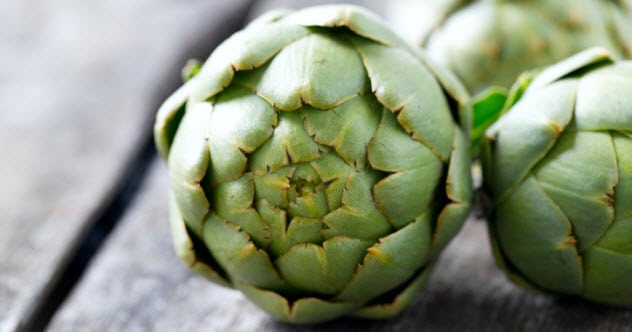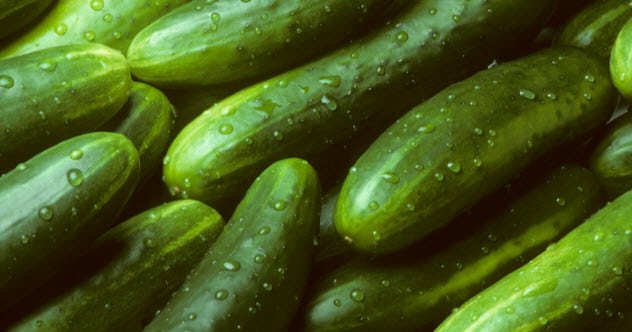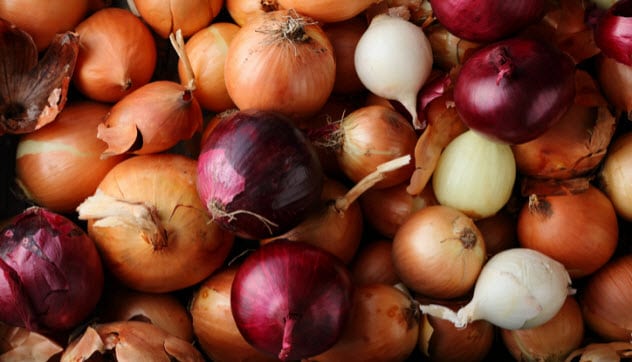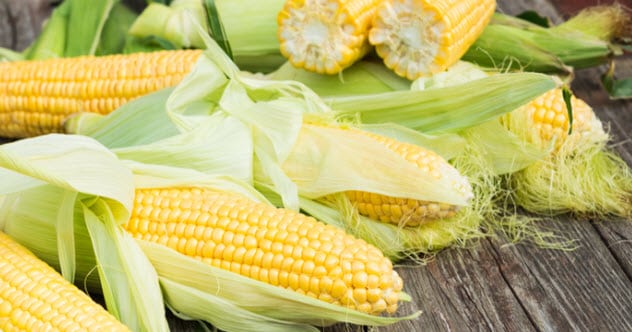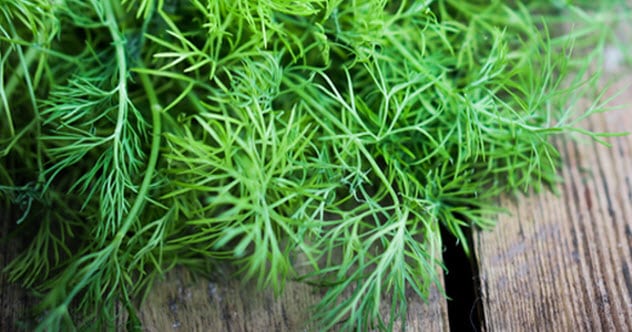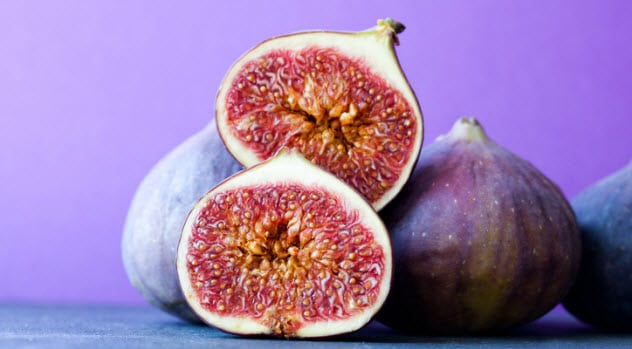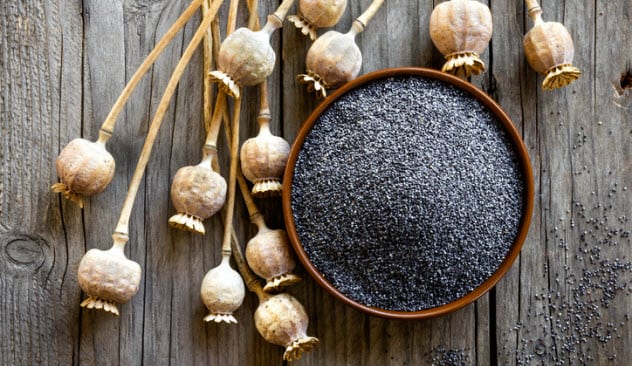But thousands of years ago in some of the earliest civilizations on the planet, these basic foods were believed to be a sort of magic. At one time, they were worshiped and revered. Besides being used to heal specific physical and emotional conditions, certain foods were believed to bring loved ones back from the dead, protect people from evil, and more.
10 Amaranth
We are probably all familiar with ancient grains. Whether we incorporate quinoa into our daily diets or see different varieties gracing the feeds of Instagram in the all-too-trendy smoothie bowls, we could each name a few if we had to. But one ancient grain was thought to provide supernatural powers by the Aztecs over 500 years ago. Not only was it a major component of their diets, but it played a vital role in their religious practices. Using honey and sometimes blood from human sacrifices, the Aztecs would often make a paste from the grains and use it to create statues of their gods. During ceremonies of worship, the statues would be broken into parts and passed out to members of the tribe for consumption. Supposedly, this paste was also used to create shields, bows, and arrows to give to newborn boys to symbolize their manly duties later in life. When the Spanish invaded in 1519, the cultivation of this grain was forbidden along with the Aztecs’ religion. This was a way of forcing Christianity onto the civilization, and anyone who did not abide by the rules was punished severely.[1]
9 Artichokes
Before we learned to dip these beauties in cheese sauce, artichokes were thought to have a variety of medicinal powers. We can find mention of artichokes as far back as Greek mythology. Cynara was a beautiful mortal girl whom Zeus came across during a trip to see his brother Poseidon. Zeus took her to Olympus and made her a goddess. Then in typical Zeus fashion, he became enraged when Cynara sneaked home for a weekend visit with her mother. He threw her off Olympus and turned her into an artichoke. Fast-forward to the first-century Romans, and they believed that parts of the artichoke could help to cure baldness and even aid with the conception of boys. Artichokes were also rumored to be an aphrodisiac. This gossip was given a lot of steam when the French queen, Catherine de Medici, was said to have consumed a great quantity of them. At this time, women were banned from eating artichokes due to their sexual power.[2]
8 Chives
These little babies are more than just a flavor of a chip. Some people have also produced different flavors of this plant’s magical history. Today, we know that chives are native to certain areas of Asia, Europe, and North America. However, there are at least two different stories about their first appearance in Europe and how they were once believed to be magic. In one version, chives first appeared in Europe in the 13th century when Marco Polo brought them over from China. From there, the British created a tradition that hanging chives from the rafters and above doorways would provide protection against evil spirits. However, a conflicting story says that chives were in Europe before Marco Polo. In this version, the ancient Romans used chives in their diets because they believed that the plant’s strong taste would bring greater strength. Racehorses, workers, and wrestlers ate chives regularly to enhance their strength. Chives were also a Roman remedy for sore throats and sunburns.[3]
7 Cucumbers
Today, one of the most notable varieties of this refreshing vegetable is the English cucumber. However, they actually originated in India and have been grown for approximately 3,000 years. One of the most unexpected uses of cucumbers goes all the way back to the Roman Empire. According to Pliny the Elder, these vegetables were used to promote fertility. Women would wear them around their waists, and midwives would carry them around and then dispose of them once a child was born.[4] In ancient Rome, cucumbers were also used to scare away mice, cure bad eyesight, and soothe scorpion bites.
6 Onions
This seemingly ordinary piece of produce was once anything but. Long before onions were bringing us to tears, they were objects of worship. In fact, onions are found throughout historical Egyptian art in a variety of shapes and sizes. These vegetables are painted into scenes of pyramids and the altars of certain gods. The Egyptians related onions to eternal life due to their concentric layers and would bury their pharaohs with them. Onions have also been found in various body parts of mummies, such as the thorax and the pelvis. So, why was the onion such a revered food to the Egyptians, especially when exploring the theme of death? According to experts, it was a common belief that these beautiful bulbs could bring breath back to the deceased. Others say that the antiseptic properties may have been thought to be magical and therefore useful in the afterlife.[5]
5 Apples
An apple a day keeps the doctor away—or so “they” say. The belief that apples can cure all diseases or at least keep you healthier has been around for centuries. In fact, it is a common thread connecting multiple cultures. But the apple is more than just a healer; it is a symbol that appears in folklore all the way back to Greek mythology. According to Irish folklore, heroes would eat apples to stay young and strong. In historical Chinese culture, the apple was given as a gift of peace.[6] The apple also represents love. The Balkans believed that when a woman accepted an apple from a man, she was engaged to him. In some Italian cultures, when a man was in love with a woman, he would present her with an apple to show and solidify his affection for her.
4 Corn
Today, corn is used for more than we even realize. Whether it is the buttery, fluffy movie snack or feed for countless types of livestock, corn is everywhere. To the Aztecs, corn (or maize) was more than just a food source. They believed that the growth and harvest process was synced with the cycle of life: birth, regeneration, and death. They even had three female deities of maize to represent each cycle, and they were worshiped and thanked heavily throughout the cycle of the crop. The deity Xilonen, representing the first or earliest crop of the summer, was worshiped with an elaborate festival. A young female slave was made to dress up as Xilonen during the eight days leading up to the festival. Men and women would dance, and the people were fed maize-focused foods. On the last night of celebrations, the Xilonen impersonator was sacrificed as a way to show gratitude to Mother Earth for the life-sustaining crop and to ensure that the cycle of crops and life would keep coexisting harmoniously.[7]
3 Dill
Dill is another herb that is plentiful in gardens today. However, before dill was a welcomed weed, it was thought in old folklore to bring people both love and happiness. Specifically, in Germany and Belgium, sprigs of dill would be attached to the bride’s dress or floral bouquet to bring the new couple blessings on their marriage. Dill also has a grim side in mythology and old beliefs. European monks believed that dill could cause infertility and had the power to drive away male demons with an appetite for sexually preying on women. Dill did find its place in witchcraft, too. Ironically, it had two uses, one on each of the extreme ends of the spectrum. Many believed that drinking a glass of dill water could reverse the effects of a spell cast on you and hanging sprigs around a home could protect from any impending spells. But others believed that witches used dill in their potions and while casting spells.[8]
2 Figs
Figs appear as far back as the Bible and were considered to be highly spiritual. However, it isn’t just this beautiful fruit itself that is used for spiritual and magical purposes. The Kikuyu women in Africa took the sap from fig trees and spread it on themselves to increase fertility.[9] But not every belief surrounding the fig is as wonderful and welcomed as fertility. In Bolivia, people thought that evil spirits stayed in the canopies of fig trees and that walking under a fig tree could cause grave illness. In Papua New Guinea, figs are feared because they are believed to be haunted by evil spirits that will be released when the fruit is opened.
1 Poppy Seeds
Today, poppy seeds are famous in baked goods. Many are also aware of the relationship between poppy seeds and opium. But the magical history of the poppy seed predates what is common knowledge to us in the Western world. In ancient Greece, the poppy was representative of Hypnos, the god of sleep, and so it was thought to aid sleep. Hypnos was believed to bring about dreams of a prophetic nature while also soothing emotional trauma. While this sounds all warm and fuzzy, the poppy seed was also believed to be associated with Hades, representing an eternal sleep or death. In the Middle Ages, poppy cake was used by young women to determine the direction from which their one true love would come. A young woman would throw a piece of poppy cake out the door and have a dog fetch it. The direction from which the dog returned would be the same as that from which her true love would appear.[10] Poppy seeds also played contradictory roles in fertility. For example, poppy seeds put in the bottom of a bride’s shoe would result in infertility. Alternatively, eating sweetbreads made with poppy seeds on New Year’s Eve was believed to aid in abundance for the year to come. Halsey is a freelance writer splitting time between Canada and the US. Always curious.

